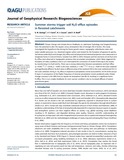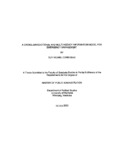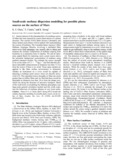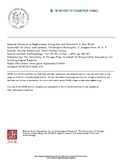| dc.contributor.author | Enanga, E.M. | |
| dc.contributor.author | Creed, I.F. | |
| dc.contributor.author | Casson, N.J. | |
| dc.contributor.author | Beall, F.D. | |
| dc.date.accessioned | 2018-09-25T23:08:11Z | |
| dc.date.available | 2018-09-25T23:08:11Z | |
| dc.date.issued | 2016-01-14 | |
| dc.identifier.citation | Enanga, E.M., I.F. Creed, N.J. Casson, F.D. Beall. "Summer storms trigger soil N₂O efflux episodes in forested catchments." Journal of Geophysical Research - Biogeosciences, 121(1) (January 2016): 95-108. DOI: 10.1002/2015JG003027. | en_US |
| dc.identifier.issn | 2169-8953 | |
| dc.identifier.uri | http://hdl.handle.net/10680/1575 | |
| dc.description.abstract | Climate change and climate-driven feedbacks on catchment hydrology and biogeochemistry have the potential to alter the aquatic versus atmospheric fate of nitrogen (N) in forests. This study investigated the hypothesis that during the forest growth season, topography redistributes water and water-soluble precursors (i.e., dissolved organic carbon and nitrate) for the formation of gaseous N species. Soil nitrous oxide (N₂O) and nitrogen (N₂) efflux and soil physical and chemical properties were measured in a temperate forest in Central Ontario, Canada from 2005 to 2010. Hotspots and hot moments of soil N₂O and N₂ efflux were observed in topographic positions that accumulate precipitation, which likely triggered the formation of redox conditions and in turn intercepted the conversion of nitrate N flowing to the stream by transforming it to N₂O and N₂. There was a strong relationship between precipitation and N₂O efflux (y = 0.44x1.22, r² = 0.618, p<0.001 in the inner wetland; y = 1.30x^{1.16} r² = 0.72, p<0.001 in the outer wetland) and significantly different N₂:N₂O ratios in different areas of the wetland (19.6 in the inner wetland and 10.1 in the outer wetland). Soil N₂O+N₂ efflux in response to precipitation events accounted for 16.1% of the annual N input. A consequence of the higher frequency of extreme precipitation events predicted under climate change scenarios is the shift from an aquatic to atmospheric fate for N, resulting in a significant forest N efflux. This in turn creates feedbacks for even warmer conditions due to increased effluxes of potent greenhouse gases. | en_US |
| dc.description.sponsorship | "This research was funded by an NSERC Discovery grant to IFC (217053‐2009 RGPIN)." | en_US |
| dc.description.uri | https://agupubs.onlinelibrary.wiley.com/doi/full/10.1002/2015JG003027 | en_US |
| dc.language.iso | en | en_US |
| dc.publisher | American Geophysical Union | en_US |
| dc.rights | info:eu-repo/semantics/openAccess | |
| dc.subject | ATMOSPHERIC COMPOSITION AND STRUCTURE: Biosphere/atmosphere interactions, Evolution of the atmosphere | en_US |
| dc.subject | BIOGEOSCIENCES: Biogeochemical cycles, processes, and modeling, Biogeochemical kinetics and reaction modeling, Nitrogen cycling | en_US |
| dc.subject | CRYOSPHERE: Biogeochemistry | en_US |
| dc.subject | GLOBAL CHANGE: Biogeochemical cycles, processes, and modeling, Atmosphere HYDROLOGY: Catchment | en_US |
| dc.subject | OCEANOGRAPHY: BIOLOGICAL AND CHEMICAL: Biogeochemical cycles, processes, and modeling | en_US |
| dc.subject | PALEOCEANOGRAPHY: Biogeochemical cycles, processes, and modeling | en_US |
| dc.subject | GEOGRAPHIC LOCATION: North America | en_US |
| dc.title | Summer storms trigger soil N₂O efflux episodes in forested catchments | en_US |
| dc.type | Article | en_US |
| dc.identifier.doi | 10.1002/2015JG003027 | en_US |




